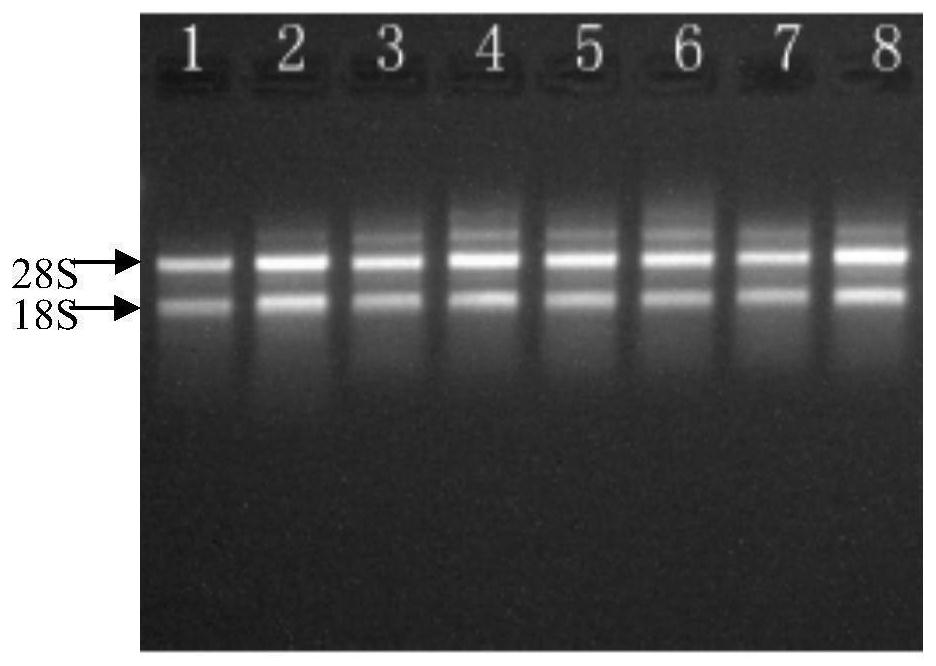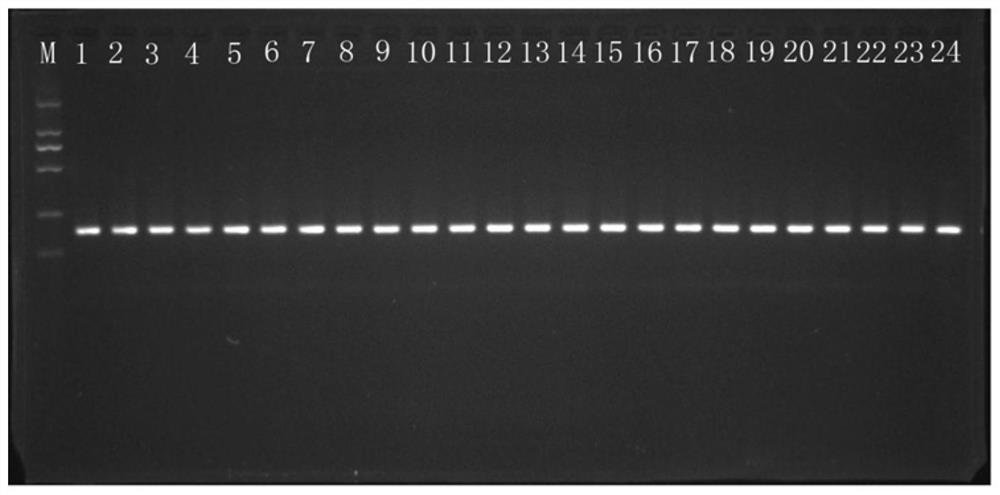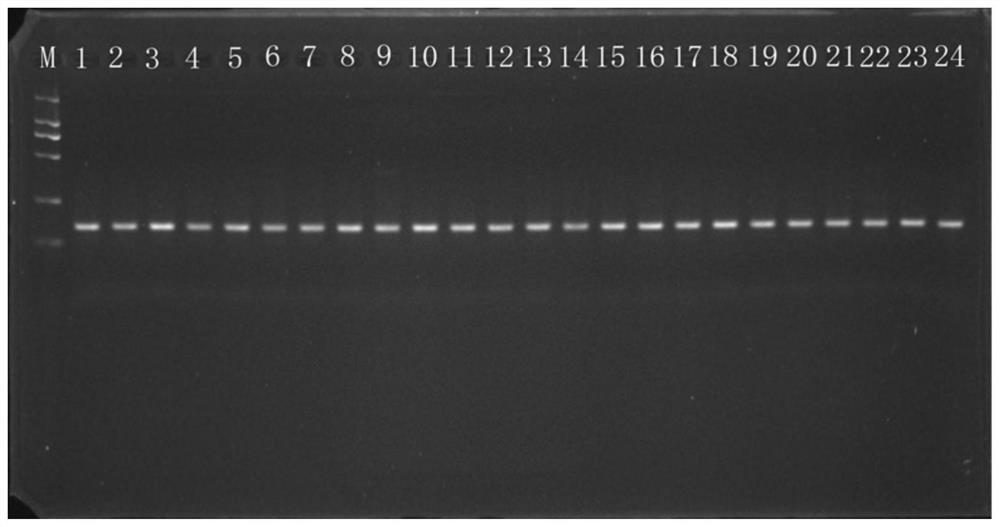Reference gene screening in colocasia esculenta corm development process and application thereof
An internal reference gene and bulb technology, applied in the field of internal reference gene screening, can solve problems such as unstable expression and achieve the effect of reducing differences
- Summary
- Abstract
- Description
- Claims
- Application Information
AI Technical Summary
Problems solved by technology
Method used
Image
Examples
Embodiment 1
[0040] This embodiment is the acquisition of the internal reference gene gene-Taro_030192, which is obtained by the following method:
[0041] One, the test material of present embodiment:
[0042] The taro material used in this example is Guiyu No. 2, a new taro variety bred by the Institute of Biotechnology, Guangxi Academy of Agricultural Sciences. In March 2020, it was planted in Guangxi Academy of Agricultural Sciences to build a scientific research base. Sampling was carried out continuously throughout the corm development period, and regular sampling was performed every 30 days. 30d, 60d, 90d, 120d, 150d, 180d, 210d, and 240d after sowing were collected from the corms, a total of 8 groups of samples were marked as YTS1, YTS2, YTS3, YTS4, YTS5, YTS6, YTS7, and YTS8. Each group of samples had three biological replicates. Peel the collected bulbs, cut them into small pieces of about 2 cm, put them into 50 ml sterile cryovials, freeze them with liquid nitrogen and put th...
Embodiment 2
[0087] According to the gene-Taro_030192 with the best stability screened out in Example 1, further verification was carried out to ensure that true and reliable quantitative data can be obtained. Using gene-Taro_030192 as an internal reference gene, the CeAGPS1 gene, a key enzyme gene of starch synthesis in the corm development process, was selected as the target gene, and the expression of the target gene in the eight stages of taro corm development was analyzed, as follows:
[0088] Different stages were extracted respectively: that is, the entire development period of taro, that is, the bulbs of 30d, 60d, 90d, 120d, 150d, 180d, 210d, and 240d after sowing (marked as YTS1, YTS2, YTS3, YTS4, YTS5, YTS6, YTS7, YTS8) The cDNA of the period was used as the template for quantitative PCR, the gene-Taro_030192 gene was used as the internal reference gene, and the ADP-glucose pyrophosphorylase small subunit gene CeAGPS1 was used as the target gene to design primers. The primers are ...
PUM
 Login to View More
Login to View More Abstract
Description
Claims
Application Information
 Login to View More
Login to View More - R&D
- Intellectual Property
- Life Sciences
- Materials
- Tech Scout
- Unparalleled Data Quality
- Higher Quality Content
- 60% Fewer Hallucinations
Browse by: Latest US Patents, China's latest patents, Technical Efficacy Thesaurus, Application Domain, Technology Topic, Popular Technical Reports.
© 2025 PatSnap. All rights reserved.Legal|Privacy policy|Modern Slavery Act Transparency Statement|Sitemap|About US| Contact US: help@patsnap.com



